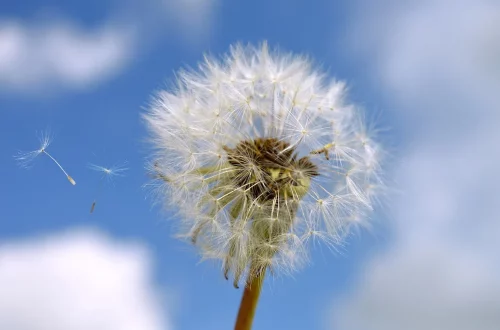
Understanding Bald Dandruff: Causes, Treatments, and Prevention Tips
Bald dandruff, often a perplexing issue for many, can be a source of frustration and embarrassment. Unlike traditional dandruff, which typically manifests in individuals with hair, bald dandruff affects those who have experienced hair loss or have very short hair. This condition can lead to flaky skin on the scalp, which may be noticeable even in the absence of hair. While it may seem harmless, the presence of dandruff on a bald head can impact self-esteem and body image.
Understanding the underlying causes of bald dandruff is essential for effective treatment and prevention. Factors such as skin type, environmental conditions, and personal grooming habits can all play a significant role in the development of this condition. Additionally, various treatments are available, ranging from over-the-counter shampoos to natural remedies, which can alleviate symptoms and promote a healthier scalp.
This article aims to explore the causes, treatment options, and preventive measures for bald dandruff, providing valuable insights for those affected by this often-overlooked issue. By gaining a deeper understanding of bald dandruff, individuals can take proactive steps toward maintaining a healthy scalp and enhancing their overall well-being.
Causes of Bald Dandruff
Bald dandruff can arise from a variety of factors, each contributing to the flaking and irritation of the scalp. One of the primary causes is an imbalance in the scalp’s natural oils. Sebum, the oily substance produced by sebaceous glands, is essential for keeping the skin moisturized. When there is an overproduction or underproduction of sebum, it can lead to dryness or excessive oiliness, both of which can trigger dandruff.
Another significant factor is the presence of fungi, specifically Malassezia, which is a type of yeast that naturally resides on the scalp. In some individuals, this yeast can proliferate, leading to irritation and the subsequent shedding of skin cells. This condition, known as seborrheic dermatitis, can occur on bald heads just as it does on hairy scalps.
Environmental factors also play a crucial role. Changes in weather, such as cold, dry air during winter months, can exacerbate dryness and lead to flaking. Additionally, exposure to harsh chemicals found in some hair products or frequent washing can strip the scalp of its natural oils, further contributing to the issue.
Personal habits, such as not maintaining a consistent skincare routine or failing to exfoliate the scalp, can also lead to the accumulation of dead skin cells. This buildup can create a breeding ground for bacteria and fungi, worsening the condition. Finally, stress and hormonal changes may influence the health of the scalp, making individuals more susceptible to dandruff.
Understanding these causes is the first step in addressing bald dandruff effectively. By identifying the underlying factors contributing to this condition, individuals can implement targeted strategies to mitigate its effects.
Effective Treatments for Bald Dandruff
When it comes to treating bald dandruff, several options are available, ranging from topical solutions to lifestyle changes. The first step often involves using medicated shampoos designed specifically for dandruff. Look for shampoos that contain active ingredients such as zinc pyrithione, selenium sulfide, or ketoconazole. These ingredients work by reducing the growth of fungi and alleviating scalp irritation.
In addition to medicated shampoos, incorporating gentle exfoliation into your routine can be beneficial. Regularly exfoliating the scalp helps remove dead skin cells, allowing for better absorption of treatments and promoting a healthier scalp environment. Opt for a gentle scrub or a scalp brush designed for this purpose to avoid irritation.
Natural remedies can also offer relief for those seeking alternative solutions. Tea tree oil, known for its antifungal properties, can be diluted with a carrier oil and massaged into the scalp. Similarly, apple cider vinegar can be mixed with water and applied to the scalp to help balance pH levels and reduce flaking.
For individuals experiencing persistent dandruff, consulting a dermatologist is advisable. A healthcare professional can assess the condition and recommend stronger prescription treatments if necessary. In some cases, underlying skin conditions such as psoriasis or eczema may require specialized care.
Moreover, maintaining a healthy diet rich in vitamins and minerals can support scalp health. Nutrients such as omega-3 fatty acids, zinc, and biotin can contribute to skin vitality and reduce inflammation. Staying hydrated is also crucial, as proper hydration helps maintain skin elasticity and moisture.
Ultimately, finding the right treatment for bald dandruff may require some trial and error. By exploring various options and remaining consistent with a care routine, individuals can successfully manage and reduce the occurrence of bald dandruff.
Preventive Measures for Scalp Health
Preventing bald dandruff is often easier than treating it after it has developed. Implementing proactive measures can significantly reduce the chances of experiencing this condition. One of the most effective strategies is establishing a regular scalp care routine. This includes gentle cleansing and moisturizing to keep the scalp balanced and healthy.
Choosing the right hair products is also essential. Opt for sulfate-free shampoos and conditioners that are less likely to irritate the scalp. Avoiding harsh chemicals and fragrances can help maintain the natural balance of oils and prevent dryness. When trying out new products, always conduct a patch test to ensure they do not cause adverse reactions.
Regular scalp massages can stimulate blood flow and promote healthy skin. Massaging the scalp with natural oils such as coconut or jojoba oil can provide moisture, nourish the skin, and help prevent dryness. Additionally, wearing hats or protective gear in extreme weather conditions can shield the scalp from harsh elements that may contribute to dryness.
Maintaining a balanced diet rich in vitamins and minerals is another preventive measure. Foods high in antioxidants, such as fruits and vegetables, can support skin health and reduce inflammation. Incorporating healthy fats, like those found in avocados and nuts, can also contribute to scalp hydration.
Lastly, managing stress levels is vital for overall skin health. Stress can exacerbate skin conditions, including dandruff. Techniques such as yoga, meditation, or regular exercise can help mitigate stress and promote relaxation, benefiting both mental and physical health.
By taking these preventive steps, individuals can significantly reduce the risk of developing bald dandruff, leading to a healthier and more comfortable scalp.
**Disclaimer:** This article is not intended as medical advice. For any health concerns or conditions, it is crucial to consult with a healthcare professional.




